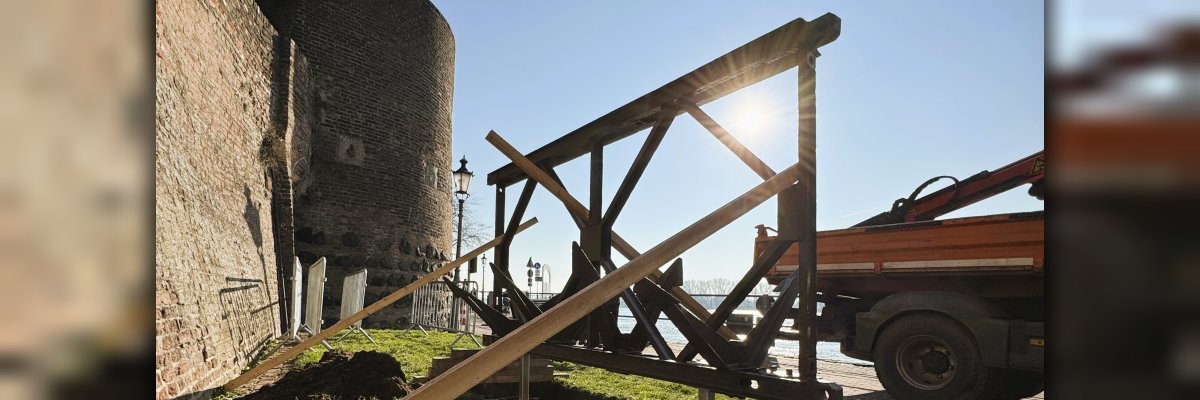"Without the Bailey Bridges, we would not have won the war."
This was said by the British Field Marshal Bernard Montgomery (1887-1976). On March 23rd, 1945, he commanded "Operation Plunder", in which the Allies crossed over to the right bank of the Rhine. The supply of troops and vehicles for the further advance took place via Bailey Bridges. In Rees alone, the pioneers of the "Royal Engineers" built seven bridges by May 1945, including the longest Bailey Bridge of the Second World War at 1.517 km.
The British engineer Donald Bailey (1901-1985) developed a "modular system" of prefabricated steel frames and beams. With bolts and cotter pins, all parts could be connected quickly and easily. On wide rivers, such as the Rhine, floating pontoons usually supported the construction.
The element of a Bailey Bridge exhibited here was recovered in August 2022 by Thijs van Dooren and helpers on the right bank of the Rhine near Rees. It was restored and painted in the Netherlands. A special feature of this Bailey frame are the four barbed elements that had clawed their way into the banks of the Rhine since 1945. As an anchor, the exhibited part, secured the actual Bailey Bridge.
